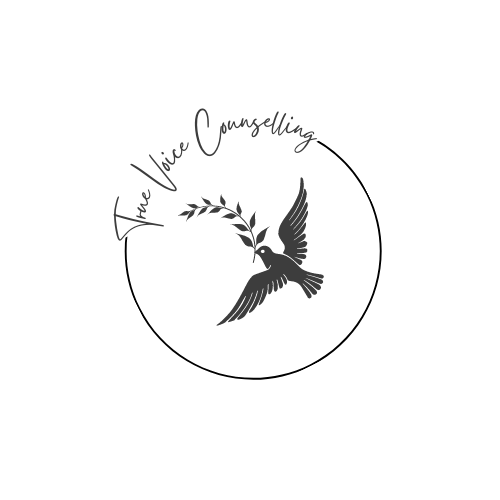Understanding Common Myths About Therapy
Many people begin therapy with high hopes, only to feel discouraged when progress seems slow or outcomes don’t meet their expectations. Often, this disappointment stems from common misconceptions about how therapy works. Here are some of those beliefs — and what research and experience tell us:
“Therapy didn’t work for me.”
This may not be the full story. Therapy’s effectiveness depends on several factors — including your relationship with your therapist, your goals, and whether the approach suits your needs (Norcross & Wampold, 2011). In fact, research shows that the therapeutic alliance — the trust, collaboration, and connection between therapist and client — is one of the strongest predictors of positive outcomes (Martin et al., 2000).
If the connection didn’t feel right, it doesn’t necessarily mean therapy “failed.” Sometimes, finding a therapist who’s a better fit or exploring a different approach can make a real difference. At other times, external circumstances or timing may play a role. Therapy is most effective when it feels collaborative and safe — and it’s okay to seek out the right conditions for you.
“Talk therapy doesn’t address trauma in the body.”
While traditional talk therapy focuses on thoughts and feelings, it also engages the body — whether directly or indirectly. Research shows that trauma is often held not only in the mind but also within the nervous system and body tissues (Fogel, 2013; Levine, 2010). Techniques such as grounding, breathwork, and somatic awareness can support the safe processing of trauma.
Many therapists integrate body-based approaches alongside talking therapies. Rather than viewing talk therapy as “just talking,” it may help to see it as part of a wider process — one that can also include somatic work when needed. For some, working directly with the body enhances the depth and sustainability of healing (Ogden & Minton, 2000).
“My previous therapist just mirrored me and asked me to notice things.”
It can be easy to overlook the value of reflection and mirroring, especially when we’re hoping for direct advice or solutions. But these methods play a powerful role in raising self-awareness and promoting change (Bowen, 1978; Siegel, 2012). They help you observe your relational patterns, emotional responses, and ways of thinking — often unlocking insights that pave the way for growth.
That said, it’s absolutely okay to ask your therapist for practical tools or strategies. Therapy works best when you feel empowered to collaborate, share your needs, and explore different ways of working together.
“Therapists only care because they get paid.”
Therapy is a professional relationship — but that doesn’t mean it lacks genuine care. Most therapists choose this work because they value connection, healing, and human growth. While financial agreements are necessary, ethical practice is rooted in creating a safe, respectful space where meaningful change can happen (Wampold, 2015).
Research consistently shows that the quality of the therapeutic relationship — not just the method used — is the strongest factor in successful outcomes (Norcross & Wampold, 2011). Your therapist’s commitment is to your well-being, growth, and autonomy.
“If I’m still struggling with the same issues, therapy isn’t working.”
It’s understandable to feel this way, especially when progress seems slow. But therapy isn’t about quickly erasing struggles. It’s about shifting how you relate to your experiences, emotions, and challenges (Jacobson, 2004).
Deep, lasting change often takes time — especially when working with longstanding patterns, relational wounds, or ingrained beliefs (Levine, 2010). Progress may look like increased self-awareness, healthier coping strategies, or improved relationships — not necessarily the disappearance of all difficulties. Therapy aims to support resilience and personal growth, helping you navigate life’s inevitable challenges with greater clarity and strength.
Final Reflection:
Therapy is a gradual, collaborative process. Understanding this can help you approach it with openness, patience, and self-compassion. Your journey is uniquely yours — and meaningful change often unfolds step by step. Trust the process, trust yourself, and remember that growth is a testament to your courage and capacity for healing.
References:
Bowen, M. (1978). Family therapy in clinical practice.
Jacobson, N. (2004). Acceptance and change in couple and family therapy. Guilford Press.
Levine, P. A. (2010). Waking the tiger: Healing trauma. North Atlantic Books.
Martin, D. J., Garske, J. P., & Davis, M. K. (2000). The relation of the therapeutic alliance to outcome in psychotherapy: A meta-analysis. Journal of Consulting and Clinical Psychology, 68(3), 438–450. https://doi.org/10.1037/0022-006X.68.3.438
Norcross, J. C., & Wampold, B. E. (2011). Evidence-based therapy relationships: Research conclusions and clinical practices. Psychotherapy, 48(1), 98–102. https://doi.org/10.1037/a0022161
Wampold, B. E. (2015). The heart and soul of change: Delivering what works in therapy. APA.
Wampold, B. E. (2015). The great psychotherapy debate: The evidence for what makes therapy work. Routledge.
